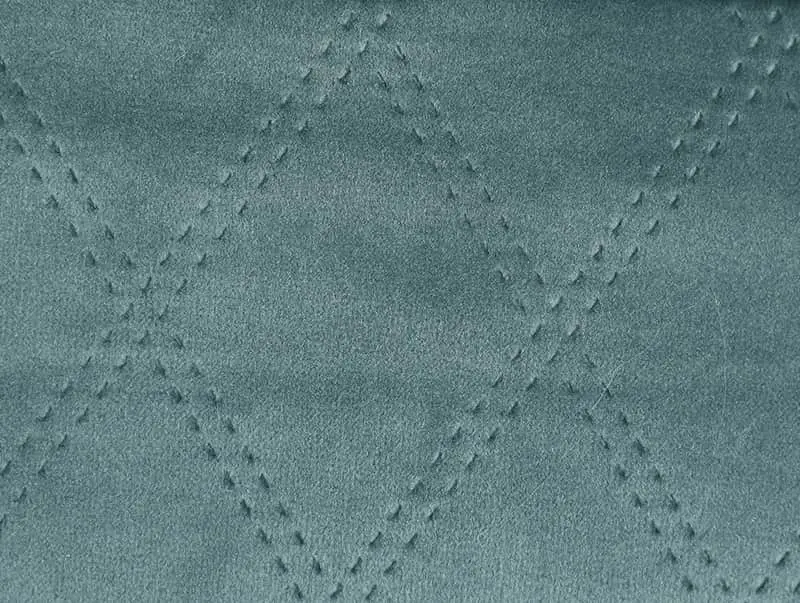Restoring the softness and texture of sofa velvet upholstery after cleaning, especially if the pile has been flattened, requires a careful approach to revive its plushness and restore its original luster. Velvet can lose its texture due to frequent use, improper cleaning methods, or simply the natural wear and tear over time. Here's a step-by-step guide on how to restore the softness and texture:
Gentle Brushing
Use a Velvet Brush or Soft Bristle Brush: After cleaning your velvet sofa, use a soft bristle brush or a velvet-specific brush to gently lift the pile. Always brush in the direction of the pile (the way the fabric naturally lays). Brushing against the pile can cause damage or fraying.
Steaming the Fabric: Hold a steam iron about 4-6 inches away from the fabric and let the steam gently penetrate the fibers. The heat from the steam will help relax the fibers, making them easier to lift. After steaming, immediately use a brush to gently lift the pile.
Reviving the Pile with Heat
Use a Steam Cleaner: If the pile is severely flattened, a steam cleaner can help loosen the fibers. Hold the steam nozzle a few inches above the fabric to avoid direct contact with the fabric, which could lead to water damage. Gently run the steam over the fabric, lifting the pile by hand or using a soft brush afterward to enhance the effect.
Ironing with a Cloth: Lay a cotton cloth or towel over the velvet fabric and gently press with an iron on the lowest heat setting. The cloth will protect the fabric from direct heat while helping to lift and smooth the pile.
Fluffing the Fabric with Your Hands
Hand Manipulation: After cleaning, you can use your hands to gently fluff and lift the pile. Rub the fabric in a circular motion with your fingers to revive the natural texture and softness of the fabric.
Use a Gentle Fabric Rake: A fabric rake or a velvet rake can help lift the pile without causing any damage. These tools are designed to gently separate the fibers and help restore the fabric’s plushness.

Reapplying Fabric Protection (Optional)
Velvet-Specific Fabric Protector: After restoring the pile, consider applying a fabric protector specifically designed for velvet or upholstery. These products help maintain the fabric’s texture by repelling dust, dirt, and liquids, preventing further flattening of the fibers.
Spray with a Delicate Fabric Care Product: Some velvet upholstery fabric care products contain conditioning agents that can help keep the fibers soft and smooth. Always test on a small, inconspicuous area first.
Avoid Excessive Moisture
Dry the Fabric Completely: If the velvet was cleaned with water or another liquid, ensure the fabric is fully dried before attempting to restore the pile. Excess moisture can cause the fibers to remain matted and difficult to lift.
Avoid Over-Wetting: When cleaning, avoid soaking the velvet with excessive moisture. Water can penetrate deep into the fibers, causing them to clump together, which leads to a flattened, worn appearance.
Professional Help for Deep Restoration
Professional Cleaning and Restoration: If the velvet fabric remains significantly flattened after cleaning, you may want to seek professional upholstery cleaning services. Professionals can employ specialized techniques, such as dry cleaning, steam cleaning, or vacuuming, to restore the velvet's texture and softness.
Reupholstery: In cases where the fabric is too damaged to restore, or if it has become too worn over time, reupholstering the sofa may be the best option to bring back the softness and texture.
Preventive Care to Maintain Softness
Regular Cleaning: Regular, gentle cleaning can prevent buildup of dirt and debris that could cause the velvet pile to flatten prematurely. Light vacuuming with a fabric brush attachment can also help keep the pile in good condition.
Avoid Sun Exposure: Prolonged exposure to sunlight can damage velvet, causing it to lose its texture and color. Try to position your sofa away from direct sunlight or use curtains or blinds to protect the fabric.
Limit Heavy Use: Velvet upholstery can show signs of wear and flattening with heavy use, especially on high-contact areas like armrests and seat cushions. Consider rotating cushions periodically to distribute wear more evenly.











